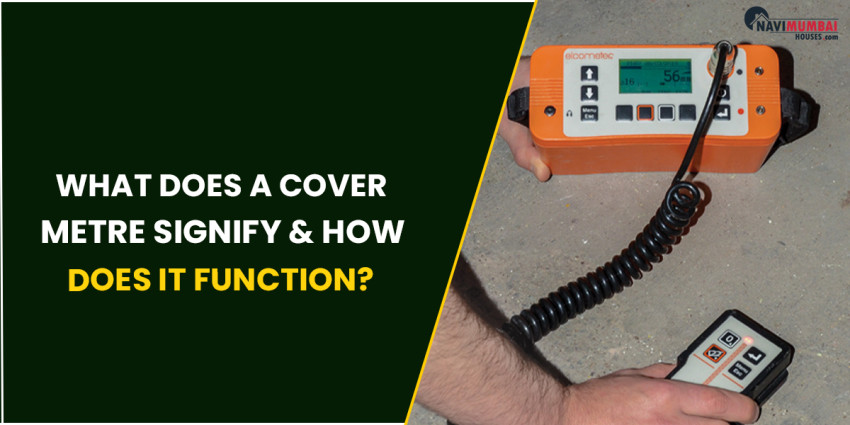
Finding rebars and pinpointing the exact concrete cover are done with a cover metre. Here is all the information you require.
An instrument used to measure the amount of concrete covered by steel reinforcing bars and metal pipes is a cover metre, sometimes referred to as a rebar finder. The cover metre can be used to estimate the diameter, depth, positioning, and orientation of the reinforcing bar (also known as the rebar). A rebar finder is utilised to locate and determine the orientation of steel reinforcing rebars beneath the surface of concrete.
Cover metre: What is a cover metre?
A cover metre is a device used to find rebars and determine the precise concrete cover. Rebar detectors are simpler tools that can only find metallic items below the surface. The pulse-induction technique is among the most popular ones because of its low-cost design. The information on the placement of steel bars, concrete covers, and bar diameters is crucial, directly or indirectly, in many field applications, which is why the magnetic rebar locator test is important in construction projects.
For example, knowing the diameter of a bar and its position is required to comprehend the spacing of bars and their placement in existing projects where plans might not be available. This is because these constructions may not have drawings.
Finding the positions of the rebars also becomes crucial in order to prevent cutting them while taking core extracts from a concrete specimen. It is important to keep in mind that some bar types, including as glass fibre and post- or pretensioned strands, are excluded from the cover metre test.
How does the cover metre function?
A gadget called a cover metre utilises magnetic fields to gather data on steel reinforcement and concrete coverings. The fact that reinforcing steel, which is present in concrete, modifies the alternating magnetic field, provides rationale for utilising magnetic equipment to discover it.
When a hand-held search gadget is dragged across the surface of concrete, it emits an auditory beep to indicate it is directly above a reinforcing bar. If the size of a bar is known, the depth may also be determined using these metres. Additionally, these metres may be used to determine the size of the bars if the depth of cover is known.
However, much calibration is required to achieve satisfactory results. The approach is worthless in areas that are heavily reinforced, have two or more adjacent bars, or have reinforcement that is literally next to one another, despite the fact that the bars can be positioned up up to 175 mm from the concrete mass.
Inaccurate findings may arise if the reinforcing bar spacing is the same as, or very near to, the depth of the concrete cover. While this test is being run, there must not be any steel or other metals around. Some test findings need to be corrected by chipping concrete in order to guarantee concrete cover and bar size.
Cover metre: Field applications
• Putting out plans for old buildings and structures for maintenance
• Testing reinforced constructions on the spot
• Cutting and drilling cores
• Conformity check of new buildings
• Investigations on unidentified structures
• Examining corrosion
Cover metre: Precautions
It is advised to insert the first layer of steel bars when the element is reinforced with two layers. It is challenging to locate the second layer when the layers are too close together. To accurately determine the diameter of the bars, it is advised to choose a location on the structure where there is enough room between the rebars. It should be noted that the accuracy of cover metre test equipment reduces with increasing concrete cover.
Source From:- navimumbaihouses






